The Library of Consciousness
of Consciousness

Knowledge is basic. It is knowledge which enables us to understand the world and ourselves, and to exercise some control or guidance. It sets us in a fruitful and significant relation with the enduring process of the universe.

Cosmology is the study of the origin, evolution, and eventual fate of the universe. Modern cosmology grew from ideas before the twentieth century, but made huge strides when Albert Einstein published his theory of general relativity in 1915. General relativity explains gravity and the structure of spacetime. It allows cosmologists to build mathematical models that describe the whole universe and track its changes over time, starting from the first moments after the Big Bang around 13.8 billion years ago.
One major area of research in cosmology is understanding the universe’s beginning. Evidence shows the universe expanded rapidly from an extremely hot, dense state into the current cooler cosmos we observe. Important clues about these first moments come from the Cosmic Microwave Background radiation, which is leftover heat from early universe. Precision maps of this radiation made in the past thirty years reinforce the Big Bang theory and give cosmologists better tools to test ideas. Other active research looks into dark matter, dark energy, the formation of the first stars and galaxies, and the eventual fate of the universe. Improved observations and complex simulations on powerful computers will help reveal more secrets of outer space and our place within its grand scale.
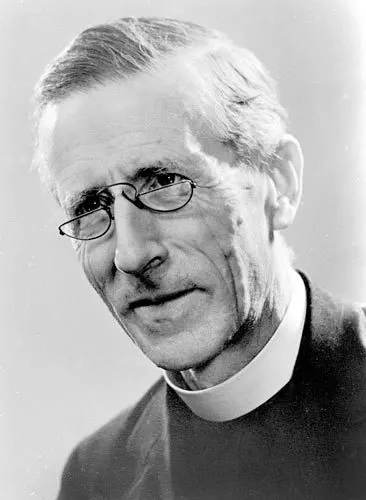
A Note on Progress
A cosmic battle rages between those who proclaim “We are moving!” and the immobilists who insist “Nothing changes.” Pierre Teilhard de Chardin passionately argues that the universe progresses through mankind’s collective evolution of consciousness. For him, Christianity’s future lies in recognizing this biological genesis unfolding—the cosmos physically realizing its psychic fulfillment through humanity striving to form one united Body of Christ.

A Psychedelic Point of View
Buck the status quo! Rebel philosopher Terence McKenna shook things up in this closing speech after a month of being scholar-in-residence at Esalen, arguing that reality escapes our rational grasp. He chided science and philosophy's paltry models that diminish nature's infinitude. Seeking to spur his audience from passive acceptance, McKenna called to revere expanded consciousness. He urged toppling the assumptions bolstering dominator culture to midwife more liberated, psychedelically-attuned societies. By trusting our intuition's cosmic tether, we can transform reality into something stranger and more wonderful than we suppose.

Adventures of Ideas
A mind-bending odyssey through the realms of human thought and civilization, Whitehead’s Adventures of Ideas dissects the evolution of ideas, from ancient Greece to modern times, unveiling the intricate tapestry of philosophical concepts that shape our world. He unravels the interplay between science, philosophy, and culture, challenging readers to embark on an intellectual adventure like no other.
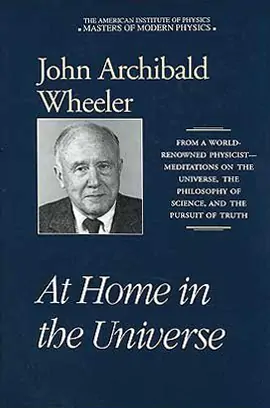
At Home in the Universe
At Home in the Universe explores the profound role of human consciousness in the shaping of reality. Wheeler delves into quantum physics, cosmology, and philosophy, proposing that observers play a critical part in the universe's existence. He introduces ideas like "participatory anthropic principle" and "it from bit," suggesting that reality is information-based and that the act of observation helps bring the universe into being. The book blends science with deep philosophical inquiry.

At Home in the Universe
The Search for the Laws of Self-Organization and Complexity
Stuart Kauffman’s At Home in the Universe unveils a scientific revolution centered on spontaneous order in complex systems. Kauffman argues that complexity itself triggers self-organization, revealing life as a natural outcome rather than a chance event. From cell development to cultural evolution, he explores how this principle shapes diverse phenomena. Praised as a visionary by Stephen Jay Gould and Philip Anderson, Kauffman’s work extends Darwin’s theory and offers profound insights into the essence of life.

Awakening to Archaic Values
A weekend workshop in which Terence encourages humanity to return to harmonic habits which have been lost in the tide of time.
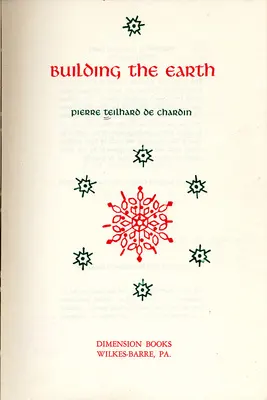
Building The Earth
A visionary and hopeful book on humanity's future relationship to the planet from which it arose, Teilhard outlines a new psychological state of awareness in which individual humans unite into planetary Personhood. Paragraphs are arranged in verse and interspersed with delicate graphic illustrations.

Centrology
An Essay in a Dialectic of Union
Teilhard proposes a guiding hidden rule present in the universe, leading everything from simplicity to complexity and consciousness. He suggests that as cosmic particles evolve, they become more complex and conscious, ultimately converging toward a unifying Omega point. This vision offers a fresh perspective on the universe, blending science and philosophy to reveal a grand, interconnected cosmic journey.
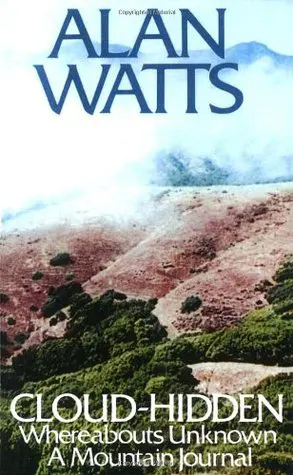
Cloud-Hidden, Whereabouts Unknown
A Mountain Journal
Over the course of nineteen essays, Alan Watts ruminates on the philosophy of nature, ecology, aesthetics, religion, and metaphysics. Assembled in the form of a mountain journal, written during a retreat in the foothills of Mount Tamalpais in California, Cloud-Hidden, Whereabouts Unknown is Watts’ meditation on the art of feeling out and following the watercourse way of nature, known in Chinese as the Tao. Embracing a form of contemplative meditation that allows us to stop analyzing our experiences and start living into them, the book explores themes such as the natural world, established religion, race relations, karma and reincarnation, astrology and tantric yoga, the nature of ecstasy, and much more.
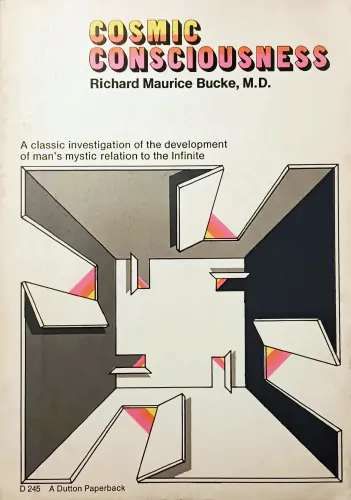
Cosmic Consciousness
A Study in the Evolution of the Human Mind
Cosmic Consciousness explores the profound, transformative experience of heightened awareness that transcends ordinary perception. Richard Bucke reveals glimpses of a deeper, universal truth, where time and space dissolve, and individuals feel a deep connection to all of existence. Those who attain this state are filled with peace, love, and enlightenment, moving beyond the self to embrace the infinite. He offers hope that humanity’s evolution may one day lead to a collective awakening, unlocking boundless potential for spiritual growth and unity.
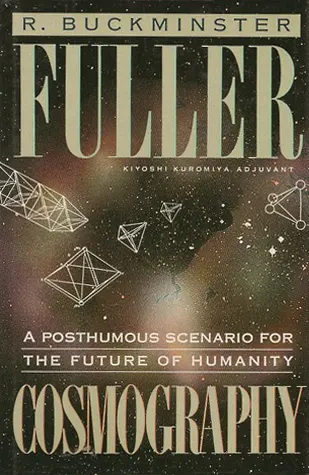
Cosmography
A Posthumous Scenario for the Future of Humanity
An ambitious synthesis of Fuller’s lifetime of interdisciplinary work, spanning geometry, systems theory, design, and cosmology. He outlines synergetic principles underlying natural structures, sustainable architecture like geodesic domes, and humanity’s potential through whole systems thinking and technologies in equilibrium with the universe’s finite resources. Dense but visionary, it encapsulates Fuller’s goal of developing a “Cosmography”—a coordinated model for all knowledge.
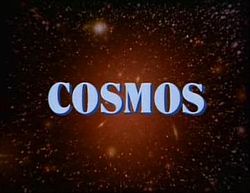
The Shores of the Cosmic Ocean
Cosmos, Episode 1
Carl Sagan opens the program with a description of the cosmos and a “spaceship of the imagination” shaped like a dandelion seed. The ship journeys through the universe’s hundred billion galaxies, the Local Group, the Andromeda galaxy, the Milky Way, the Orion Nebula, our solar system, and finally the planet Earth. Eratosthenes’ successful calculation of the circumference of Earth leads to a description of the ancient Library of Alexandria. Finally, the “Ages of Science” are described, before pulling back to the full span of the cosmic calendar.

One Voice in the Cosmic Fugue
Cosmos, Episode 2
Sagan discusses the story of the Heike crab and artificial selection of crabs resembling samurai warriors, as an opening into a larger discussion of evolution through natural selection (and the pitfalls of intelligent design). Among the topics are the development of life on the Cosmic Calendar and the Cambrian explosion; the function of DNA in growth; genetic replication, repairs, and mutation; the common biochemistry of terrestrial organisms; the creation of the molecules of life in the Miller-Urey experiment; and speculation on alien life (such as life in Jupiter's clouds). In the Cosmos Update ten years later, Sagan remarks on RNA also controlling chemical reactions and reproducing itself and the different roles of comets (potentially carrying organic molecules or causing the Cretaceous–Paleogene extinction event).

Harmony of the Worlds
Cosmos, Episode 3
Beginning with the separation of the fuzzy thinking and pious fraud of astrology from the careful observations of astronomy, Sagan follows the development of astronomical observation. Beginning with constellations and ceremonial calendars (such as those of the Anasazi), the story moves to the debate between Earth and Sun-centered models: Ptolemy and the geocentric worldview, Copernicus' theory, the data-gathering of Tycho Brahe, and the achievements of Johannes Kepler (Kepler's laws of planetary motion and the first science-fiction novel).

The Backbone of Night
Cosmos, Episode 7
Carl Sagan teaches students in a classroom in his childhood home in Brooklyn, New York, which leads into a history of the different mythologies about stars and the gradual revelation of their true nature. In ancient Greece, some philosophers (Aristarchus of Samos, Thales of Miletus, Anaximander, Theodorus of Samos, Empedocles, Democritus) freely pursue scientific knowledge, while others (Plato, Aristotle, and the Pythagoreans) advocate slavery and epistemic secrecy.

The Lives of the Stars
Cosmos, Episode 9
The simple act of making an apple pie is extrapolated into the atoms and subatomic particles (electrons, protons, and neutrons) necessary. Many of the ingredients necessary are formed of chemical elements formed in the life and deaths of stars (such as our own Sun), resulting in massive red giants and supernovae or collapsing into white dwarfs, neutron stars, pulsars, and even black holes. These produce all sorts of phenomena, such as radioactivity, cosmic rays, and even the curving of spacetime by gravity. Cosmos Update mentions the supernova SN 1987A and neutrino astronomy.

The Edge of Forever
Cosmos, Episode 10
Beginning with the origins of the universe in the Big Bang, Sagan describes the formation of different types of galaxies and anomalies such as galactic collisions and quasars. The episode moves further into ideas about the structure of the Universe, such as different dimensions (in the imaginary Flatland and four-dimensional hypercubes), an infinite vs. a finite universe, and the idea of an oscillating Universe (similar to that in Hindu cosmology). The search into other ideas such as dark matter and the multiverse is shown, using tools such as the Very Large Array in New Mexico. Cosmos Update shows new information about the odd, irregular surfaces of galaxies and the Milky Way perhaps being a barred spiral galaxy.

Encyclopædia Galactica
Cosmos, Episode 12
Questions are raised about the search for intelligent life beyond the Earth, with UFOs and other close encounters refuted in favor of communications through SETI and radio telescope such as the Arecibo Observatory. The probability of technically advanced civilizations existing elsewhere in the Milky Way is interpreted using the Drake equation and a future hypothetical Encyclopedia Galactica is discussed as a repository of information about other worlds in the galaxy. The Cosmos Update notes that there have been fewer sightings of UFOs and more stories of abductions, while mentioning the META scanning the skies for signals.

Who Speaks for Earth?
Cosmos, Episode 13
Sagan reflects on the future of humanity and the question of "who speaks for Earth?" when meeting extraterrestrials. He discusses the very different meetings of the Tlingit people and explorer Jean-Francois de La Perouse with the destruction of the Aztecs by Spanish conquistadors, the looming threat of nuclear warfare, and the threats shown by destruction of the Library of Alexandria and the murder of Hypatia. The episode ends with an overview of the beginning of the universe, the evolution of life, and the accomplishments of humanity and makes a plea to mankind to cherish life and continue its journey in the cosmos. The Cosmos Update notes the preliminary reconnaissance of planets with spacecraft, the fall of the Berlin Wall and the end of apartheid in South Africa, and measures towards the reduction of nuclear weapons.
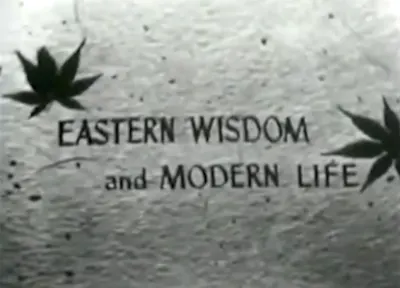
On Death
Eastern Wisdom and Modern Life (Episode 6)
Alan Watts explores Buddhist ideas of the value of death as the great renovator, including the Wheel of Life, and the idea of reincarnation as it is understood by philosophical Buddhists.

Eros and the Eschaton
What Science Forgot: The Importance of Human Beings
Delivered in Kane Hall at the University of Washington, Terence points out the universe's peculiar tendency to seek out complexity and novelty, and that humanity seems to be the focal point of this process.
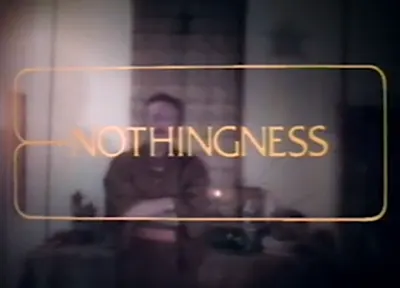
Nothingness
Essential Lectures, Program 1
Basing his ideas on sensory perception and physical experience, Alan Watts makes a compelling argument that everything actually depends upon nothing for its very existence.
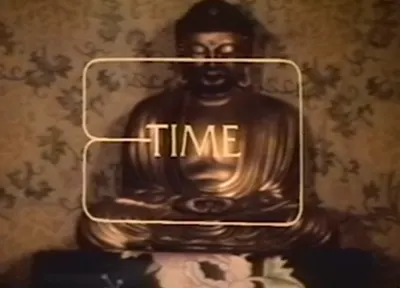
Time
Essential Lectures, Program 6
Here Alan Watts points out that our insistence that the past determines the present is nonsensical.
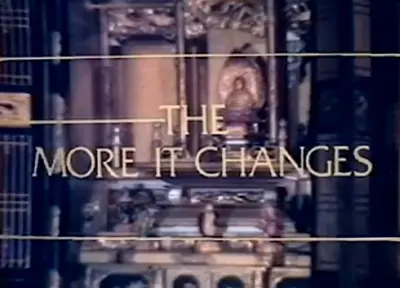
The More It Changes
Essential Lectures, Program 9
Alan Watts speaks on our fascination with reproduction through media, and on the far out notion that human beings may just be one star's way of becoming another star!

Following the Middle Way
Awaken and find peace. Alan illuminates the path out of suffering with Buddhist philosophy as our guide. Through practicing the Noble Eightfold Path of skillful understanding, action, meditation, and concentration, we walk the Middle Way to freedom from clinging and awaken to our interconnected nature.
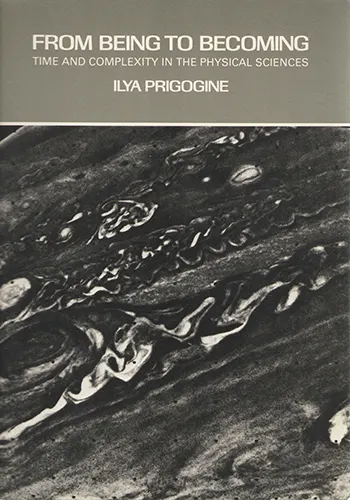
From Being to Becoming
Time and Complexity in the Physical Sciences
How has order emerged from chaos? In this book, intended for the general reader with some background in physical chemistry and thermodynamics, Ilya Prigogine shows how systems far from equilibrium evolve elaborate structures: patterns of circulation in the atmosphere, formation and propagation of chemical waves, the aggregation of single-celled animals. In an effort to understand these phenomena, he explores the philosophical implications of the work for which he received the 1977 Nobel Prize in Chemistry. From Being to Becoming explains how order can develop and offers a new approach to the asymmetry between past and future—the irreversibility of time. Prigogine presents an evolving rather than static world. This imaginative work is sure to arouse controversy and may change the way that the reader sees the laws of science and the world that those laws seek to explain.

Hot Concepts and Melting Edges
A weekend workshop held at Esalen, with the alternate titles of Deeper and Broader Questions and Eros, Chaos, and Meaning's Edge.
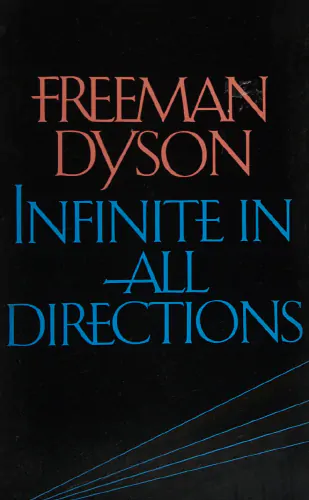
Infinite in All Directions
Infinite in All Directions explores science and religion as two complementary ways of understanding the universe. Based on Freenman Dyson's Gifford Lectures, the book celebrates diversity, both in the natural world and human responses to it. Dyson contrasts different scientific approaches using Manchester and Athens as symbols. He delves into the origin and evolution of life, highlighting how life thrives on diversity. In the final chapter, Dyson speculates on the future of life and the universe, blending science with a touch of science fiction and theology.

Is the Emergence of Life an Expected Phase Transition in the Evolving Universe?
This article proposes a new definition of life as chemical systems that achieve catalytic closure, constraint closure, and spatial closure. It argues that the emergence of such living systems is an expected phase transition in the evolving universe. However, the ever-creative evolution of life thereafter cannot be explained by physics alone, showing the limits of reductionism. Life is a double miracle—expected yet unexplainable.

Journey to India
Buddhism sees life as drama—the Self playing hide and seek, getting lost for fun. It strips Hinduism for export, pursuing enlightenment not through beliefs but direct experience of who you really are beyond the separate ego. Through dialectic questioning, it demolishes all concepts you cling to, shaking your foundations until you let go into a state of insecurity that amazingly equals freedom. The teacher seems perfectly sane having nothing to hold onto, inspiring you to be alright that way too.
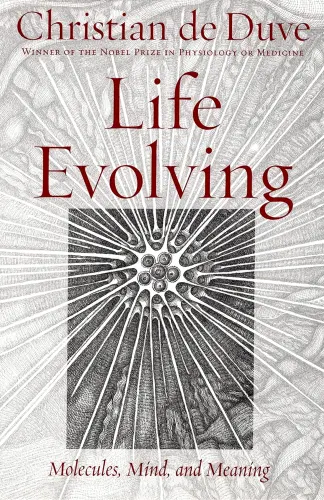
Life Evolving
Molecules, Mind, and Meaning
Christian de Duve, a Nobel Prize-winning biologist, takes readers on a journey through the biological world, from the tiniest cells to the future of life. He argues that life was bound to arise and discusses the evolution of humans, consciousness, language, science, emotion, morality, altruism, and love. De Duve concludes by speculating on humanity's future, including the possibility of evolving into a new species, and shares his thoughts on God and immortality. This wise and humane book sums up his learnings about life and our place in the universe.

Life and the Planets
Pierre Teilhard de Chardin explores the concept of complexification in the universe, focusing on the ever-increasing combination of smaller elements into larger structures, and then extrapolates this behavior to humanity's current situation. What if the human species is an intermediary evolutionary stage, and what would the next rung on the ladder look like? Teilhard suggests that it will involve the merging-together of all humanity into a divine, planetized consciousness.

Linear Societies and Nonlinear Drugs
Speaking on the first day of the 1999 Palenque Entheobotany Conference at the Chan Kha Hotel, Terence McKenna probes the mind-blowing philosophical revelations of psychedelics. He contends these consciousness-expanding substances can shatter Western rationality, unveiling mystical realities beyond mainstream paradigms. Psychedelics may hold the key to reimagining society's connection with nature and technology. McKenna passionately argues these drugs can catalyze new ways of thinking, fueling an intellectual revolution to change the world.
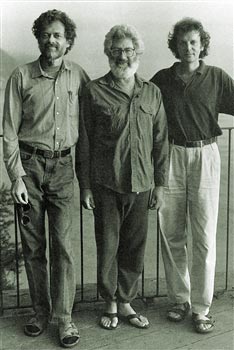
Metamorphosis
Join McKenna, Sheldrake, and Abraham on an imaginative journey into nature's creativity. Surfing the chaotic waters of psychedelic states, they catch glimpses of the Gaian mind behind Earth's being. Here, in imaginal realms beyond rationale, novelty is born. By relinquishing egoic control and surrendering to an unknowable creative force, we tap into the divine imagination—the eternal wellspring of nature's endless becomings. Immersing ourselves in this flow, we reunite with the cosmic creative essence.
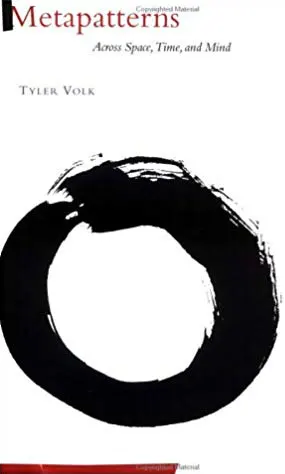
Metapatterns
Across Space, Time, and Mind
In the interdisciplinary tradition of Buckminster Fuller’s work, Gregory Bateson’s Mind and Nature, and Fritjof Capra’s Tao of Physics, Metapatterns embraces both nature and culture, seeking out the grand-scale patterns that help explain the functioning of our universe. Metapatterns begins with the archetypal patterns of space, both form-building and relational. Tyler Volk then turns to the arrows, breaks, and cycles that infuse the workings of time. With artful dexterity, he brings together many layers of comprehension, drawing on an astounding range of material from art, architecture, philosophy, mythology, biology, geometry, and the atmospheric and oceanographic sciences. Richly illustrating his metapatterns with a series of sophisticated collages prepared for this book, Volk offers an exciting new look at science and the imagination. As playful and intuitive as it is logical and explanatory, Metapatterns offers an enlightening view of the functional, universal form in space, processes in time, and concepts in mind.
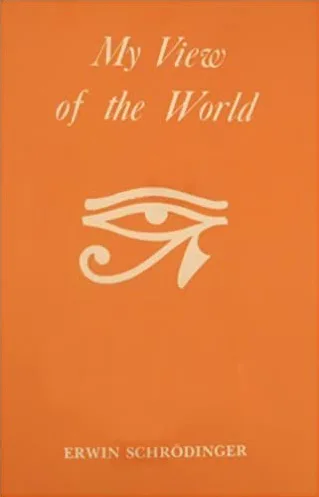
My View of the World
A Nobel prize winner, a great man and a great scientist, Erwin Schrödinger has made his mark in physics, but his eye scans a far wider horizon: here are two stimulating and discursive essays which summarize his philosophical views on the nature of the world. Schrödinger's world view, derived from the Indian writings of the Vedanta, is that there is only a single consciousness of which we are all different aspects. He admits that this view is mystical and metaphysical and incapable of logical deduction. But he also insists that this is true of the belief in an external world capable of influencing the mind and of being influenced by it. Schrödinger's world view leads naturally to a philosophy of reverence for life.

Opening the Doors of Creativity
This far-out lecture held at the Carnegie Art Museum riffs on art, shamanism, psychedelics, and saving the planet. Terence sees artists as modern shamans who can reconnect us to the Gaian mind. He thinks we're an infant species held in nature's arms, but we've got to get our act together fast and let the irrational muse guide us, or we'll trash the place. Heavy stuff, but optimistically visionary.

Parallel Thinking
Philosophy: East and West, Program 19
What a tickling trickster the universe is! As Watts wanders down philosophical byways, tales emerge of those healed by harmonizing body and world. Yet we teach children to twist themselves to fit odd ideals. Tension tunnels through society, our “civilizing” ways quite uncouth! Might we reconsider, relax our willful ways? Observantly ambling amidst being's little blooms, we rediscover unity in the unruly diversity—finding wisdom whispering within, inviting us to dance delightfully with life’s flowing forms.

Physics of Life, Time, Complexity, and Aliens
Sara Walker and Lex Fridman explore life’s grand mysteries, touching on the nature of existence and the origins of life to the potential of artificial intelligence and the future of consciousness. Walker’s unique perspective challenges conventional wisdom, inviting us to reconsider our place in the cosmic dance.

Power of Space
Weaving connections between Eastern thought and modern science, Alan Watts explores the wonder of space. For him, space is no mere emptiness but a cosmic tapestry integral to existence. He draws parallels between space and the Buddhist void, seeing both as the interwoven ground of being that allows consciousness to emerge.

Rap Dancing into the Third Millennium
(Packing For The Long Strange Trip)
Terence’s second workshop at Starwood Festival XIV. The approaching new millenium, its perils, and its promise will be the theme of this intimate workshop. We will analyze and review the past thousand years with an eye to trends and opportunities that the future may bring. Western civilization is caught in a phase transition to the first planet-wide, species-wide civilization. Does the emergence of a shared set of universal values—democracy, free markets, and the dignity of the individual—have to mean the end of diversity and pluarlism? What does human self-imaging through technology portend to each of us? Is the human race down for the count, or on the brink of its greatest adventure? Psychedelics, virtual reality, and the transformative power of magic and language will be topics for discussion.

Sense of Nonsense
In this public radio broadcast, Alan explores the origin of the desire for meaningfulness. In the search for satisfaction, what is it that is really sought for or yearned after? The talk turns from academic discussion into poetry. What is the meaning of significance?

State of the Stone
In this talk, McKenna gives one of his more hopeful presentations about love and the state of humanity at the end of the millenium.
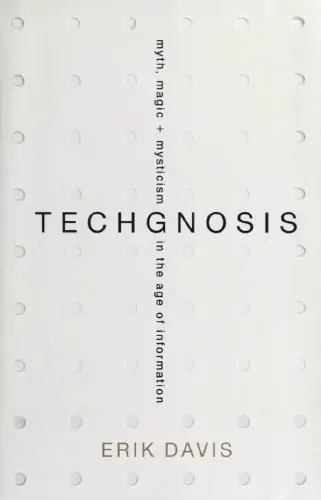
TechGnosis
Myth, Magic, and Mysticism in the Age of Information
How does our fascination with technology intersect with the religious imagination? While the realms of the digital and the spiritual may seem worlds apart, esoteric and religious impulses have in fact always permeated (and sometimes inspired) technological communication. Erik Davis uncovers startling connections between such seemingly disparate topics as electricity and alchemy; online role-playing games and religious and occult practices; virtual reality and gnostic mythology; programming languages and Kabbalah. The final chapters address the apocalyptic dreams that haunt technology, providing vital historical context as well as new ways to think about a future defined by the mutant intermingling of mind and machine, nightmare and fantasy.
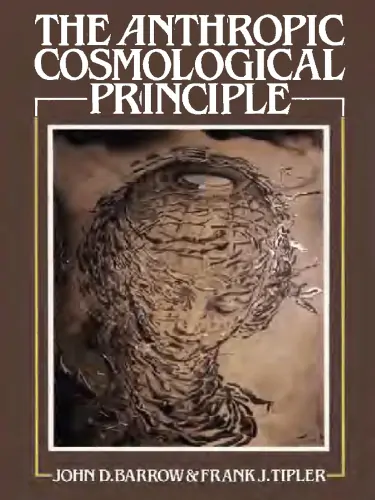
The Anthropic Cosmological Principle
Since Copernicus, science has moved humanity from the center of Creation. However, The Anthropic Cosmological Principle suggests that intelligent observers determine the Universe’s structure. Its radical form asserts that intelligent life must emerge and never die out. Cosmologists John Barrow and Frank Tipler explore the Principle’s implications, from the definition of life to quantum theory. Covering fields like philosophy and astrophysics, this work connects the existence of life with the vast cosmos, engaging a broad audience.
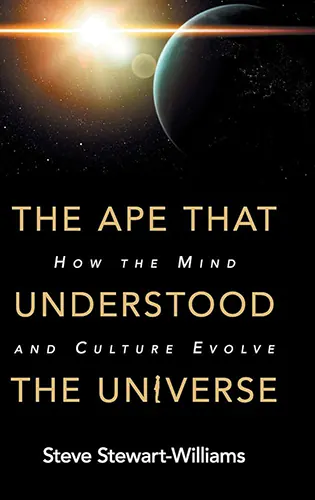
The Ape that Understood the Universe
How the Mind and Culture Evolve
The Ape that Understood the Universe is the story of the strangest animal in the world: the human animal. It opens with a question: How would an alien scientist view our species? What would it make of our sex differences, our sexual behavior, our child-rearing patterns, our moral codes, our religions, our languages, and science? The book tackles these issues by drawing on ideas from two major schools of thought: evolutionary psychology and cultural evolutionary theory. The guiding assumption is that humans are animals, and that like all animals, we evolved to pass on our genes. At some point, however, we also evolved the capacity for culture—and from that moment, culture began evolving in its own right. This transformed us from a mere ape into an ape capable of reshaping the planet, travelling to other worlds, and understanding the vast universe of which we're but a tiny, fleeting fragment.
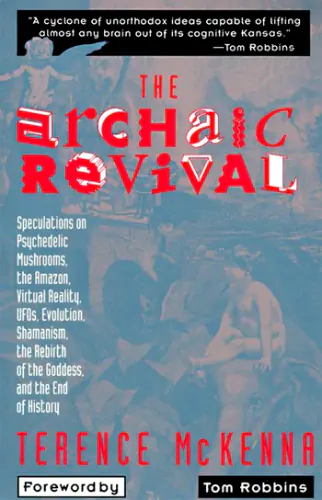
The Archaic Revival
Speculations on Psychedelic Mushrooms, the Amazon, Virtual Reality, UFOs, Evolution, Shamanism, the Rebirth of the Goddess, and the End of History
In these essays, interviews, and narrative adventures, McKenna takes us on a mesmerizing journey deep into the Amazon as well as into the hidden recesses of the human psyche and the outer limits of our culture, giving us startling visions of the past and future.
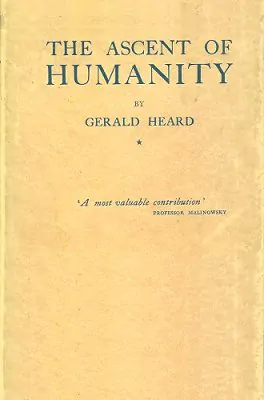
The Ascent of Humanity
An Essay on the Evolution of Civilization from Group Consciousness Through Individuality to Super-consciousness
Gerald Heard presents a novel view of history and civilization as the evolution of human consciousness, moving from collective group awareness to individual self-consciousness and beyond. Heard argues that primitive humans were deeply connected to their communities and less aware of individuality, while modern humans are highly self-conscious but separated from their unconscious minds and one another. He suggests that further progress requires advancing towards "superconsciousness," where individuals bridge these divides.

The Birth of a New Humanity
Terence McKenna explored themes of accelerating complexity, impending radical shifts in human reality, and the continuity between our changing relationship with Earth and a new cosmic modality transcending our fragile ecosystem. He posited history as a self-limiting 25,000-year process reaching its climax, suggesting individual acts of “midwifery” can ease this epochal transition. He also cautioned about combining psychoactive compounds without proper expertise.

The Directions and Conditions of the Future
Teilhard de Chardin envisions human evolution as a purposeful journey guided by three intertwined trends: a natural push toward global unity, technological advances that expand our capabilities, and a deepening of reflective consciousness. Yet, he warns that without a genuine inner cohesion—rooted in love and mutual understanding—these forces may lead to a cold, mechanized future. In his view, our destiny is not random but a guided ascent toward a higher, more meaningful collective awareness.
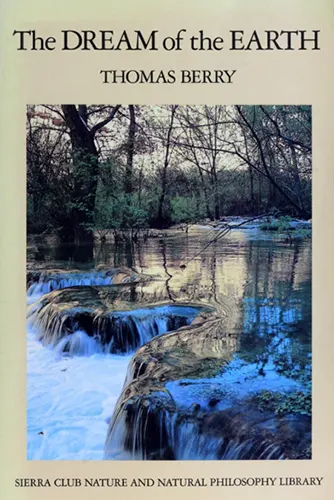
The Dream of the Earth
Noted cultural historian Thomas Berry provides nothing less than a new intellectual-ethical framework for the human community by positing planetary well-being as the measure of all human activity. Drawing on the wisdom of Western philosophy, Asian thought, and Native American traditions, as well as contemporary physics and evolutionary biology, Berry offers a new perspective that recasts our understanding of science, technology, politics, religion, ecology, and education. He shows us why it is important for us to respond to the Earth’s need for planetary renewal, and what we must do to break free of the “technological trance” that drives a misguided dream of progress. Only then, he suggests, can we foster mutually enhancing human-Earth relationships that can heal our traumatized global biosystem.

The Grand Option
Teilhard explores the choices facing humanity as it undergoes the process of socialization, and examines four paths: pessimism, optimism with withdrawal, individualistic pluralism, and convergent unity. He argues for the path of convergent unity, where socialization leads not to loss of individuality but to differentiation and personalization within a unifying whole, fulfilling humanity’s evolutionary trajectory toward higher consciousness.

The Old and the New Vision
Herbert Günther reveals how ancient Tibetan Buddhist texts offer insights into consciousness that parallel modern scientific discoveries. The Tibetans viewed humans not as isolated beings, but as expressions of universal intelligence, describing three levels: the physical body, an experiential “phantom-like” body, and a mysterious deep structure. Their texts suggest that the universe itself is conducting a grand experiment through human consciousness—playfully creating new possibilities and evolving toward higher forms of order.

The Omega Point as Eschaton
Answers to Pannenberg's Questions for Scientists
Frank Tipler presents an outline of the Omega Point theory, which is a model for an omnipresent, omniscient, omnipotent, evolving, personal God who is both transcendent to spacetime and immanent in it, and who exists necessarily. The model is a falsifiable physical theory, deriving its key concepts not from any religious tradition but from modern physical cosmology and computer science; from scientific materialism rather than revelation. Four testable predictions of the model are given. The theory assumes that thinking is a purely physical process of the brain, and that personality dies with the brain. Nevertheless, he shows that the Omega Point theory suggests a future universal resurrection of the dead very similar to the one predicted in the Judeo-Christian-Islamic tradition. The notions of “grace” and the “beatific vision” appear naturally in the model.

The Plot Thickens, the Stakes Rise
McKenna discussed his theory that humanity is accelerating towards a transcendental object at the end of time, propelled by ever-increasing novelty. He argued that the internet and new technologies like virtual reality are expanding consciousness in this trajectory. McKenna was especially excited about the legal psychedelic salvia divinorum, urging people to explore it and other plants as allies toward reaching higher states of awareness before the culmination of cosmic evolution.
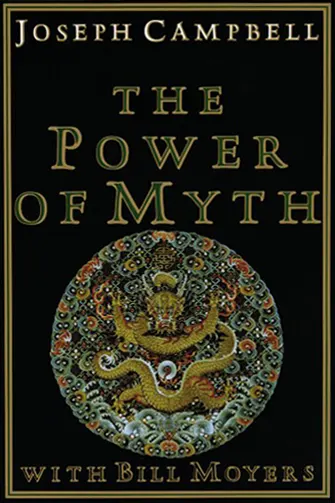
The Message of the Myth
The Power of Myth, Part 2
Bill Moyers and mythologist Joseph Campbell compare creation myths from the Bible and elsewhere, and talk about how religions and mythologies need to change with time in order to maintain their relevance in peoples’ lives.
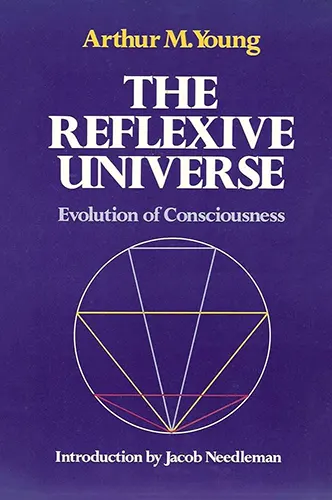
The Reflexive Universe
Evolution of Consciousness
Integrating the findings of modern science with ancient wisdom, this seminal work offers a paradigm for resolving the schism between spirit and matter. Arthur Young’s Theory of Process provides a model for the evolution of consciousness out of light (the quantum of action), offering hope for an age in search of value and meaning.
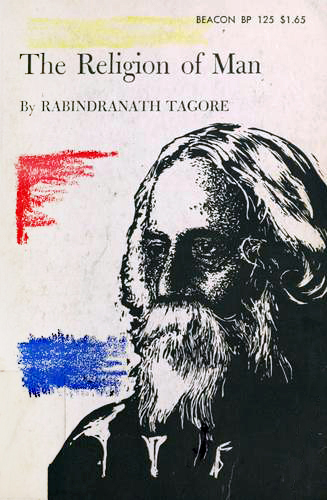
The Religion of Man
The Religion of Man is a compilation of lectures by Rabindranath Tagore, edited by him and drawn largely from his Hibbert Lectures given at Oxford University. A Brahmo playwright and poet of global renown, Tagore deals with the universal themes of God, divine experience, illumination, and spirituality.
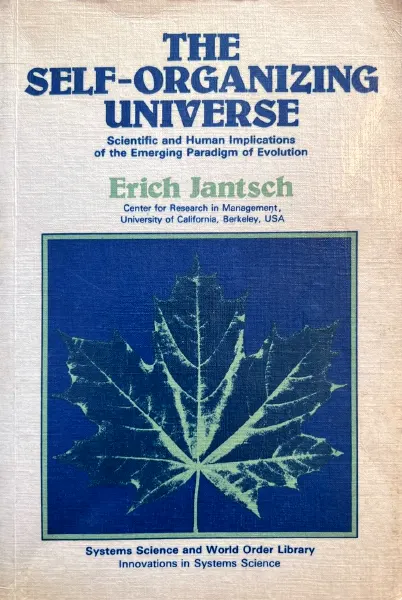
The Self-Organizing Universe
Scientific and Human Implications of the Emerging Paradigm of Evolution
The evolution of the universe—ranging from cosmic and biological to sociocultural evolution—is viewed in terms of the unifying paradigm of self-organization. The contours of this paradigm emerge from the synthesis of a number of important concepts, and provide a scientific foundation to a new world-view which emphasizes process over structure, nonequilibrium over equilibrium, evolution over permanency, and individual creativity over collective stabilization. The book, with its emphasis on the interaction of microstructures with the entire biosphere, ecosystems etc., and on how micro- and macrocosmos mutually create the conditions for their further evolution, provides a comprehensive framework for a deeper understanding of human creativity in a time of transition.

The Syntax of Psychedelic Time
Terence McKenna weaves a tapestry of ideas exploring fractal time, the psychedelic mushroom's potent voice, and humanity's impending transcendence into a galactic, post-biological singularity. Brace yourself for a journey through the uncharted realms of novelty and consciousness expansion.
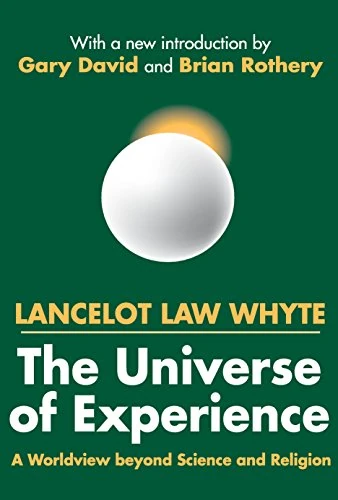
The Universe of Experience
A Worldview Beyond Science and Religion
Modern experience forces philosophy and social thought to confront the basic problems of value. Is this life worth caring about? How can we find a way between the deceit of fanatical belief and despair? In the view of Lancelot Law Whyte, the essential challenge to mankind today is an underlying nihilism promoting violence and frustrating sane policies on major social issues. Avoiding the seductive trap of utopianism, Whyte approaches this challenge by defining the terms of a potentially worldwide consensus of heart, mind, and will.
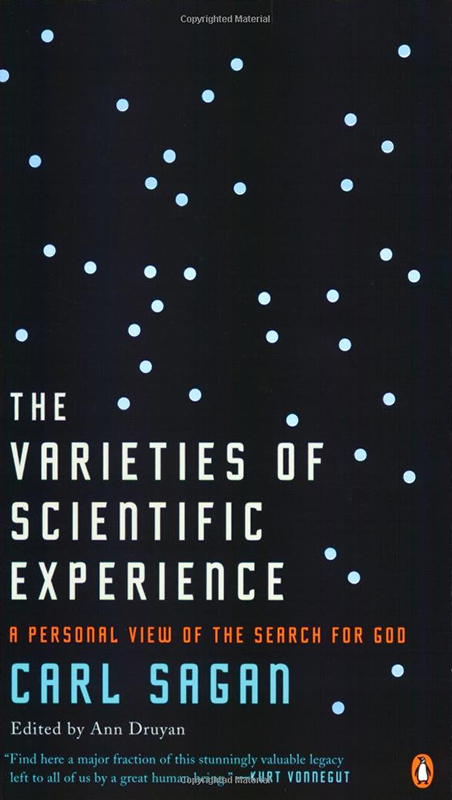
The Varieties of Scientific Experience
Carl Sagan's prescient exploration of the relationship between religion and science, and his personal search for God.
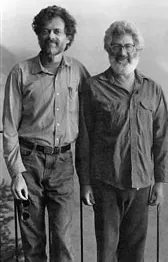
The World Wide Web and the Millennium
Seldom do we have an opportunity to test the accuracy of oracular predictions, but this fascinating conversation between two great thinkers has already proven to be right on target. Speculations include the future evolutionary development of the Internet, whether it is an embryonic intelligence, whether it will merge our minds into a planetary consciousness, or whether it is an alien brain waiting for humanity to cross an evolutionary threshold. Let the bard and the chaos theorist weave an exquisite cybernetic fantasy for you in this evening seminar.

The World and its Double
This workshop, held at the Nature Friends Lodge, revolves around how psychedelics dissolve boundaries, connect us to the transcendental, and reveal the novel realities underlying our perceived mundane existence. Terence explores how shamanic techniques give access to higher dimensions of consciousness, and describes history as an ever-accelerating process approaching an eschatological transformation or singularity.

Unifying Principles of Evolution
In the light of the emerging self-organization paradigm, principles may be found which unify the description of evolution in two important dimensions: (1) across the hierarchy of evolutionary dynamics from ontogeny through phylogeny to anagenesis (the evolution of new levels of evolutionary dynamics), and (2) across domains of reality from the physical (cosmic) through the biological (sociobiological, ecological) to the sociocultural domain. Ten such principles, partly containing each other, are tentatively proposed here: Non-equilibrium, spontaneous symmetry breaking, self-reference, self-transcendence, irreversibility, metastability (complementarity of stochastic and deterministic factors), epigenealogical process (cognition and memory), autonomy, symbiosis, and indeterminacy (openness). Examples are provided which are suggestive of the applicability and unifying quality of these principles along the two dimensions.

Walking Out of the Ordinary
(Speech at Sunshine Gardens)
Journey with Terence McKenna into the mystical depths of the psychedelic experience, where alien dimensions beckon and unseen vistas await. McKenna describes fantastical realms beyond ordinary conceptions of reality—worlds that hold promise for expanding human consciousness. He argues persuasively that plant medicines like psilocybin can serve as a key not only to self-knowledge, but to rediscovering our cosmic belonging. McKenna's uncanny ability to articulate the ineffable allows him to initiate audiences into the revelatory power of psychedelic states. Join him on this quest, and you too may glimpse the infinities within.
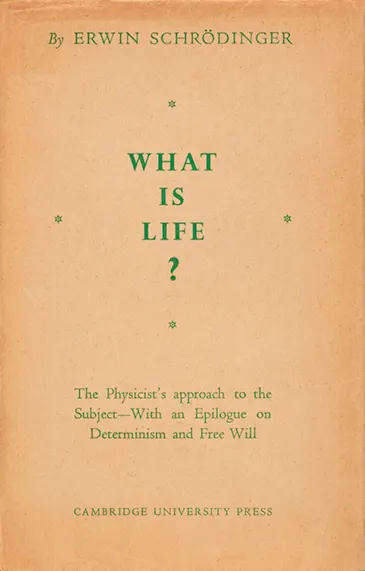
What Is Life?
The Physical Aspect of the Living Cell
This book was based on a course of public lectures delivered by Schrödinger in February 1943, under the auspices of the Dublin Institute for Advanced Studies at Trinity College, Dublin. The lectures attracted an audience of about 400, who were warned "that the subject-matter was a difficult one and that the lectures could not be termed popular, even though the physicist’s most dreaded weapon, mathematical deduction, would hardly be utilized." Schrödinger's lecture focused on one important question: How can the events in space and time—which take place within the spatial boundary of a living organism—be accounted for by physics and chemistry?

World as Play
Watts presents a core Eastern philosophy of the world as a dramatic illusion, and that it exists for no other reason except to be experienced in a playful manner.

Youniverse Explorer
Douglas Harding demonstrates his “Youniverse” educational toy, which visually depicts the process of investigating one’s identity, starting from the outer viewpoint of galaxies and zooming in to the innermost center.